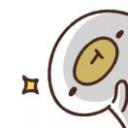无抽搐电休克用于男性精神障碍患者治疗临床分析
时间:2022-10-11 11:20:24

【摘 要】目的:探讨无抽搐电休克治疗男性精神障碍的临床方法。方法:选取精神分裂障碍患者150例,随机分为两组,其中对照组72例,观察组78例,使其有可比性。对照组患者给予利培酮联合氟哌啶醇治疗;观察组患者给予利培酮联合无抽搐电休克治疗。对两组患者治疗效果进行评价,并统计两组患者治疗前后PANSS、TESS得分。结果:观察组患者治疗效果明显优于对照组;经过治疗,两组患者PANSS评分均有所下降,且在治疗3d、7d、14d时观察组患者得分明显低于对照组;在治疗7d和14d时观察组患者TESS得分明显低于治疗1d和3d时,也明显低于对照组。上述比较差异明显,有统计学意义(P
【关键词】无抽搐电休克;精神障碍;治疗
【中图分类号】R749 【文献标识码】A 【文章编号】1004-7484(2013)05-0033-01
The clinical analyze of non-convulsively
eletroconvulsive therapy for male with mental disorders
Zhang Jilan
(Mental hospital of Guang’an City, Sichuan Province, 638000)
【Abstract】Objective: To investigate the clinical methods of non-convulsively eletroconvulsive therapy for male with mental disorders. Methods: 150 of schizophrenic disorders were chosen and divided into two groups, the control group was 72 cases and the observation group was 78 cases so that it was comparable. The patients in the control group were treated with risperidone combined haloperidol; the patients of the observation group were treated with risperidone combined non-convulsively eletroconvulsive therapy. The efficacy was evaluated. Moreover, the score of PANSS and TESS before and after the therapy were counted between the two groups. Results: The efficacy of observation group is significantly better than the control group. After therapy, the score of PANSS decreased in both of the two groups. Besides, the PANSS score of the observation group in the therapy of 3d, 7d and 14d is significantly lower than the control group. In the oservation group, the TESS score in 7d and 14d of the therapy is significantly lower than 1d and 3d of the therapy, and is also significantly lower than control group. The difference was statistically significant (P
【Keywords】non-convulsively eletroconvulsive therapy; mental disorder; therapy.
尽管近年来应用于精神障碍治疗药物得到了迅速发展,但是效果仍然不是很理想,而无抽搐电休克又被称为改良电休克,是近年来通过对传统电休克治疗方法进行改良而来的用于治疗躁狂、精神分裂以及抑郁症的新技术[1]。本研究通过对78例男性精神障碍患者实施无抽搐电休克治疗取得不错效果,现报告如下:
1 资料与方法
1.1 临床资料 选取2008年1月~2012年10月期间我院收治的男性精神障碍患者150例,随机分为两组。其中对照组72例,年龄(25~49)岁,平均(33.17±10.27)岁;住院次数(1~6)次,平均(3.86±1.03)次;首发年龄(14~31)岁,平均(22.31±7.26)岁;病程(5~30)年,平均(10.46±8.62)年。观察组78例,年龄(23~49)岁,平均(33.81±10.33)岁;住院次数(1~6)次,平均(3.67±1.14)次;首发年龄(15~32)岁,平均(23.19±7.33)岁;病程(5~30)年,平均(11.04±8.73)年。所有患者均符合精神分裂症诊断标准[2];均经过为期6个月以上3种(剂量相当于450mg/d氯丙嗪)抗精神病药物应用治疗效果不佳;排除躯体性疾病以及药物依赖者;PANSS评分>60分[3],且家属签订知情同意书。两组患者在年龄、住院次数、发病年龄、病程等方面无明显差异,有可比性(P>0.05)。
